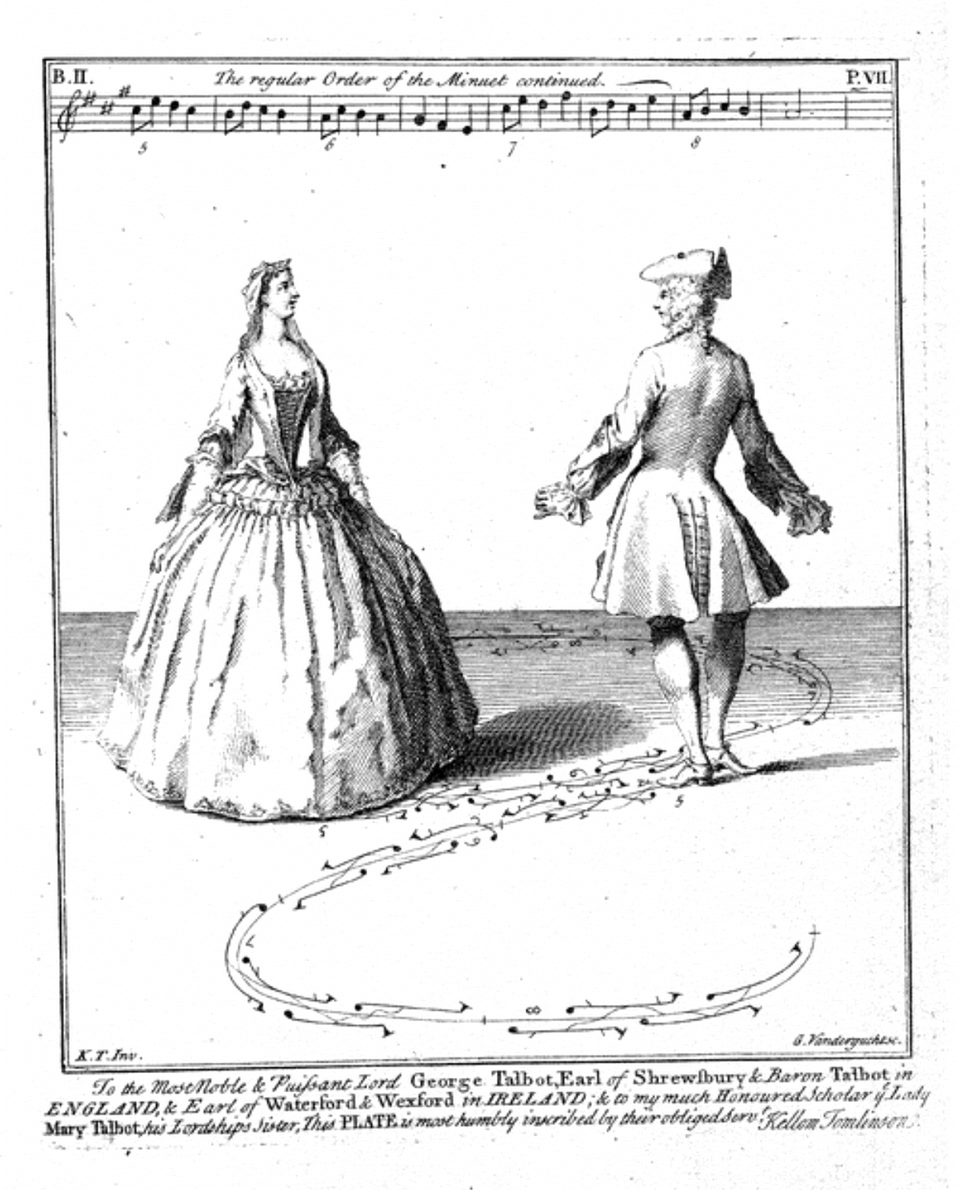
A few days ago, having nothing much of importance to do, I read a short story by the 19th century master of the genre, Guy de Maupassant. In his brief life, he wrote about three hundred of them. The story that I chanced upon was called Minuet and set in the Jardin du Luxembourg in Paris. It is a strangely haunting and nostalgic piece, in which one of the characters refers to the minuet as the “Queen of Dances”. And at one time, it was.
From about 1650, the minuet dominated aristocratic ballrooms all over in Europe for well over a hundred years. It was a symbol of the aristocracy and especially popular at the court of Louis XIV who incidentally, founded the Royal Academy of Dancing. The word “minuet” (or “menuet”) derives from the French word “menu” which, you might be surprised to know, means “slender” or “small” and refers to the tiny dance steps. To perform the dance with appropriate elegance, finely honed skills were necessary.
In court circles, the minuet became almost a state of mind as well as a dance, in which formal attire and ceremonious etiquette were expected. The minuet infiltrated most of the life at court, so it was hardly surprising that it appeared in much of the instrumental music of the day. The 17th century composer Jean-Baptiste Lully wrote over ninety minuets and both Bach and Handel used minuets in their orchestral suites, sometimes combining two of them to make a longer and more substantial piece. These minuets were not intended for dancing and were usually played at a faster tempo than those for the ballroom.
Such was the intense popularity of the dance that 18th century composers nearly always included a minuet in their symphonies and string quartets, usually as the third movement. Court orchestras were quite small by today’s standards and it became common practice to write a contrasting middle section for just three instruments. For reasons too obvious to explain, this middle section was known as the trio.
Mozart learned to dance as a child and as an adult he evidently danced very well indeed, especially the minuet. Even so, by Mozart’s time the minuet must have been considered slightly passé and pretty much at the end of its social life. But it thrived in symphonies and string quartets well into the early years of the following century.
Oddly enough, no one is quite certain how many symphonies Mozart wrote. It was always assumed that he wrote forty-one of them, but recent research has shown that there were probably several others that have since been lost. To my mind, this is one of the best video performances of this work, albeit a bit old in the tooth. Throughout the symphony, Bernstein takes the tempi somewhat leisurely and the splendid minuet begins at 22:19 and very well-known it is too. If you listen to the whole symphony, you’ll find that there’s a great deal to enjoy in the other three movements.
Although the origins of the string quartet can be traced back to Baroque times, it came into its own during the 18th century and has remained popular among composers ever since. The instrumentation has always been two violins, one viola and one cello and in the 18th century, music for string quartet used virtually the same structure as that of the symphony. As a result, the third movement was nearly always a minuet and trio. Over a span of four decades, Haydn wrote about seventy string quartets. The nickname Sunrise comes from the ascending theme played over quiet, sustained chords at the very beginning of the quartet.
Playing in a string quartet is more of a challenge than playing in an orchestra, because the individual parts are so exposed. There’s no conductor of course, so the musicians have the task of keeping together and judging the overall sound balance, largely by listening and watching each other. In performance, the players might look completely relaxed, but there’s a lot of intense concentration going on.
This quartet comes from a set of six that Haydn wrote in the late 1790s. The minuet starts at 15:06 and in the trio, we enter another world mysteriously evoking the sounds of peasant bagpipes, far from the glittering ballrooms of the royal courts. If you have time, listen to the entire work because this is wonderful music, superbly played. The final part of the breathless last movement is thrilling.
So we ask, what happened to the minuet, the so-called Queen of Dances? Like most other things, it simply faded out of fashion. I suppose much the same thing could be said – rather sadly – of the short stories by Guy de Maupassant.
 |
 |
 |





